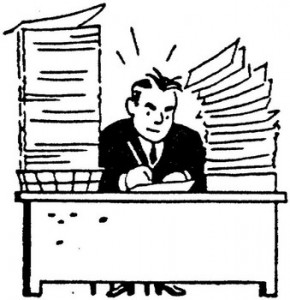Paper, Benjamin, Paper.
The lowest-hanging fruit opportunity in reforming health care today is paper. Getting rid of it, that is.
In their Recommndations to the Obama Administration and 111th Congress, Ingenix says that, “Administrative cost savings are win-win propositions, benefiting all stakeholders.”
Health Populi’s Hot Points: As Congress continues to wrestle with what $20 billion can do for electronic medical data in the U.S., addressing administrative waste is in health is an opportunity to mine some found money which won’t require a 10-year wait for an ROI.
The point here is to move toward administrative efficiency in parallel with migrating toward electronic clinical data.
There’s lots to mine beyond claims and payments. One powerful technology that Ingenix talks about that can cut administrative costs is predictive modeling. A targeted use for this technology is to identify and stop inaccurate payments to health providers. Ingenix estimates that, if deployed in Medicare and Medicaid, predictive modeling could save 1% of health care costs to the programs. That would generate savings of $7 billion annually to American taxpayers.
I’m involved in an effort launched by Emdeon to monitor business efficiency in health care. Called the U.S. Healthcare Efficiency Index, this is a cross-industry project that’s tracking the transition from a paper-based and phone-based health care system to an electronic one. The primary objective is to raise awareness about the waste in American health care that, if targeted, could create efficiencies that will save our health system hard dollars.
To learn more about the inefficiencies in American health care, see the U.S. Health Efficiency Index website at www.ushealthcareindex.com. Do visit the website and, if you’re interested, sign up and get involved. As Ingenix smartly points out, driving paper out of the system benefits all stakeholders in American health care.
Waste continues to plague the fragmented, irrational American health system. While the sturm-und-drang of health reform heats up again inside the Beltway between Congress and special interest groups, there remains a huge opportunity to drive costs out of the health system that could be conserved for a variety of uses (e.g.,to cover the uninsured, among other practical applications).
Some 15% of health spending in the U.S. is spent on billing and insurance administration in the U.S., shown in the table published by the Kaiser Family Foundation in 2007. Henry Aaron of the Brookings Institution wrote in the New England Journal of Medicine in October 2008, “As much as $700 billion a year in health care services are delivered in the United States that do not improve health outcomes.”
There are all kinds of waste in American health care; waste is found in both paper-based and clinical processes.
The 15% of health spending in the U.S. that goes toward administrative processes has many moving parts. In the seemingly simple category of financial transactions in health care, there is the claims submission process, eligibility verification, claims status inquiries, claims payment, and claims remittance.
Addressing inefficiencies in just medical claims-related transactions could yield savings of nearly $30 billion, according to Emdeon. Making all medical payments via direct deposit could generate savings of $11 billion.





 I am so grateful to Tom Lawry for asking me to pen the foreword for his book, Health Care Nation,
I am so grateful to Tom Lawry for asking me to pen the foreword for his book, Health Care Nation,  Thanks to Feedspot for naming this blog, Health Populi, as a
Thanks to Feedspot for naming this blog, Health Populi, as a